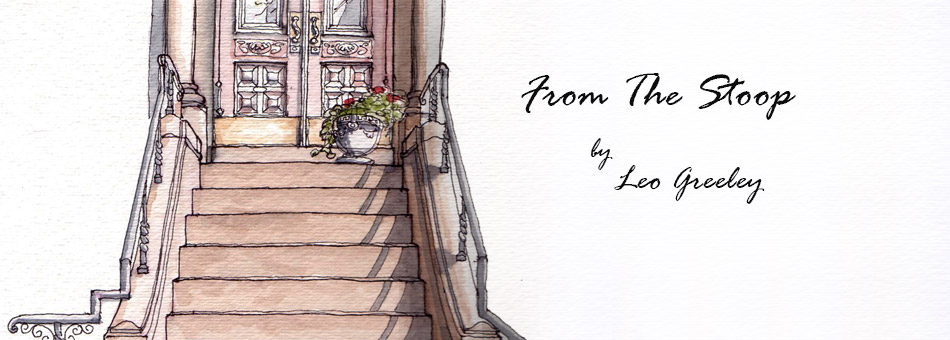From the Stoop-feb2014
Till Text do we part.
A cold day on the stoop today. Been one of those winters that never ends. Regardless, however life goes on as always. The same cars drive by at expectant times. The same people go about their business. And Sarah, returning home from a day at college walks ever so slowly towards me on the other side of the street.
She leans against the store front wall, head bent, tablet in her left hand and her bare fore finger poised over the screen. The occasional snowflake drifting past her face. Quite pretty today I thought but why does she rarely smile. Her expression never seems to change as she stops at intervals along the street to check for something on that tablet of hers. A familiar beep tells her that a new message has arrived.
This time a peaceful smile crept to her lips. Obviously the text was for her and was pleasant. Perhaps romance is in her cyber air?
Humanity has been absorbed in a digital era where billions of people are connected via an ever encroaching technology boom. Technological growth has led to changes in the ways in which humans communicate with one another and we are connecting in new ways on both physiological and emotional levels. New neural pathways are created as a result of using the internet and new relationships are being formed more quickly and by different venues. Research suggests that the brain may interpret this digital interaction as the same as in person interaction while others maintain that differences are growing between how we perceive one another online as opposed to in reality. The ways humans are interacting with each other are changing, and this is changing us. Inevitably, as technology shows no signs of slowing its expansion into every facet of our lives, these changes will become more pronounced.
One of the most dominant features of technology has become its evolution of the way in which we communicate with one another. Human communication has remained fairly constant, and limited, for the vast majority of our time on earth. Face to face and interpersonal communication had been the status quo for thousands of years. Charisma and oratorical skills as well as social cues and eye contact have been keystones in our abilities to interact, get what we want, and make progress as a society. This is all changing. It has become commonplace to send an email instead of writing a letter, a text message instead of calling, and adding someone on Facebook instead of inviting them to coffee.
The neural circuitry of our brains is rapidly evolving before our eyes to accommodate our propensity to check our twitter accounts multiple times a day, surf the internet relentlessly, and blog about our every thought and action. Similarly, our emotional responses have evolved to accommodate our new perception of interaction. The issue of dating and relationships has become particularly important because it has the potential to have dramatic consequences for society.
a 2005 Kaiser family Foundation study revealed that children 8 to 18 years old receive about eight and a half hours of digital stimulation a day. This ranges from TV and video to music and using the computer. This phenomenon causes an addictive feeling of power and self-worth. People actually feel more confident and connected, which makes them want to persist on the path of continuous partial attention. Sort-term, there is a boost of energy and memory can actually increase. The problem comes when the brain can no longer handle the overload of information. At this stage the stress hormones are released into the body and long-term or chronic exposure to these can be very detrimental to mental and physical health. There is even some evidence supporting the idea that this may actually alter the neural pathway.
The way we are forming relationships is changing, and is happening at an amazingly fast rate. This is due largely to social networking and technology’s advances in communication.
I can’t help but look at the mostly emotionless face of Sarah as she interacts with her valentine in her 10 by 7 inch flat world and wonder what my grandchildren will see. Her brain does not register that what she is doing is bizarre and it is starting to accept that this is the way to have a relationship. When she begins to interpret her computerized interactions as real then she will be on the road to loosing ability to functionally interact in person. When technology reaches a pinnacle there always seems to be a reason to say that it will go full circle. I can only hope that for the romantics in the world that that circle sees them gazing hopelessly into the eyes of the one they love. And especially hopefully without the pinch and zoom feature.


February 14th, 2014 at 11:14 am
I wonder. Personally, I feel a cold front from “people” most of the time, with a few, marvelous exceptions. Technology, while extremely good at passing along messages, is lousy at conveying warmth, wonderful smells and all the other things that make love special and so much a part of what makes us human. You cannot hug someone via an iPad. Cute little emoticons don’t cut it.
Everyone needs to be touched, kissed, loved and included. Technology tends to isolate us all from each other unless sometimes, we just put our darn machines down once in awhile.
February 17th, 2014 at 7:24 am
Well said scrivem. When next I see you, I will give you a very big hug!